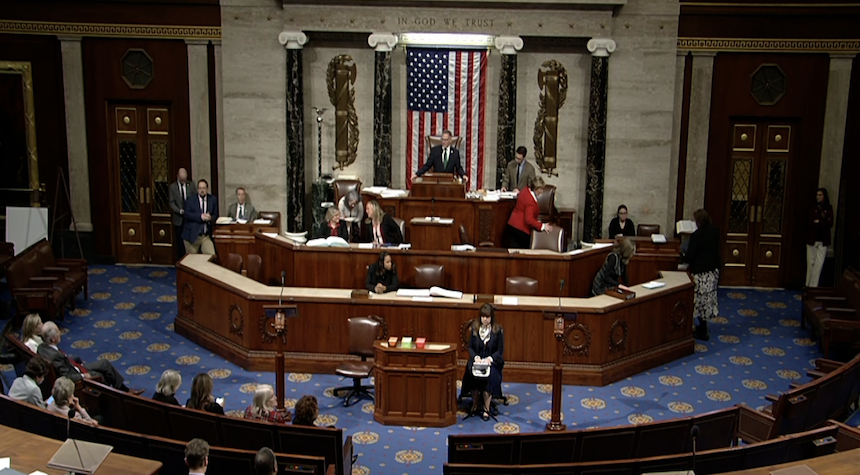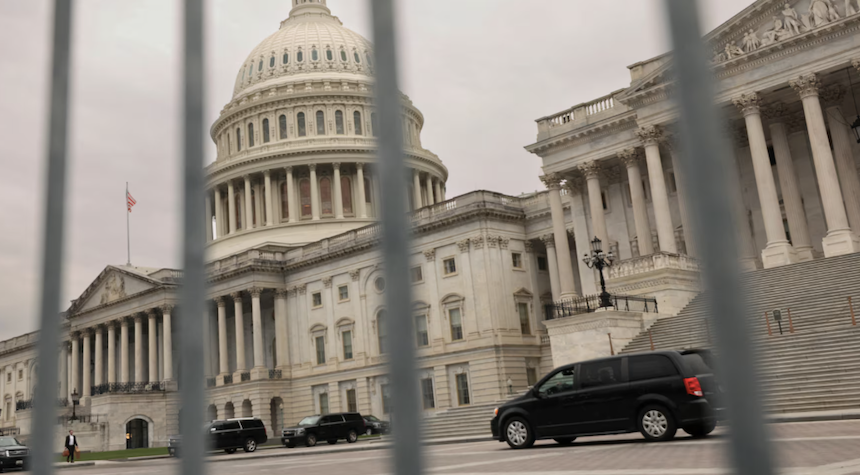House lawmakers are expected to vote soon on a measure to avert a partial government shutdown after a similar bill backed by Donald Trump’s election failed Thursday.
Congress is scrambling to find a way forward as the clock approaches the federal funding deadline. A partial shutdown is expected Saturday at 12:01 am if nothing is done.
Speaker Mike Johnson (R-La.) suggested that a vote would take place Friday in the House after a closed-door meeting of House GOP leaders where their plan was presented.
Johnson stated that he expected the process to continue. We will not have a shutdown of the government. We will pay our employees, military personnel, disaster victims, and anyone else who depends on the federal government to get paid during the holidays.
The national debt is now over $36 trillion and the deficit exceeds $1.8 trillion.
A number of lawmakers have said that the upcoming legislation will extend the current funding levels for the government through mid-March. This measure, known as a continuing Resolution (CR), is paired with over $100 billion for disaster relief for victims affected by storms Helene, and Milton and assistance for the agricultural industry.
Johnson wants to bypass the regular House procedures and get the bill directly to a chamber-wide vote. This is known as “suspension rules”.

The threshold for passing the bill has been raised to two-thirds, which is a critical requirement for Democrats.
Rep. Thomas Massie (R-Ky.) told reporters that he believes Johnson reached an agreement with House Majority Leader Hakeem Jeffries (D-N.Y.). Massie is a long-time Johnson critic and said he wouldn’t vote for the legislation.
Massie stated, “Trump wanted to increase the debt ceiling, but now the bill is brought up without it.”
A second Republican legislator argued that Johnson would not proceed without Trump’s approval.
When asked if Trump or Elon Musk supported the deal, Rep. Dan Meuser (R-Pa.) replied, “We wouldn’t if they didn’t.”
Trump and Musk led a conservative revolt against the initial plan of averting a partial shutdown, a deal bipartisan that was reached by negotiations between the two top Democrats and Republicans from both Congressional chambers.
This bill of 1,547 pages would have extended the current funding levels for the government until March 14. Hardliners in the GOP were angry at what they considered unrelated measures, such as a pay increase for congressmen, provisions on health care, and legislation aimed to revitalize RFK Stadium, in Washington, D.C.
The bill was withdrawn after Trump and Musk threatened that they would force any legislator out of office who refused to support a CR paired with action on debt limits.
A prior bipartisan agreement suspended the debt ceiling until January 2025, but Trump urged Republicans to act now to avoid a protracted, messy fight at the beginning of his presidency.

The second version of the funding agreement was much shorter, with only 116 pages. The stadium bill was not included, nor were the pay raises for Congress. However, it did include measures to finance the rebuilding of Baltimore’s Francis Scott Key Bridge as well as disaster aid funding. The debt ceiling was also suspended until January 2027.
The second plan was defeated in the House after all Democrats and 38 Republicans who were opposed to raising the debt ceiling or suspending it voted against the bill.
Johnson met with the holdouts on Friday, alongside Trump’s nominee Russell Vought to lead Trump’s Office of Management and Budget and Vice President-elect JD Vance.
Johnson promised in the closed-door meeting that Republicans would raise the debt ceiling early next year, as part of their plans for a massive spending and policy overhaul.
Multiple people said that during their meeting behind closed doors on Friday, House GOP leadership unveiled their plan for a CR as well as their plan to increase the debt ceiling by $1.5 trillion followed by $2.5 billion in net spending reductions.
However, it’s not yet clear if this bill will convince all 38 holdouts. Many people had argued for a plan that would separate disaster relief from agricultural aid and vote on bills with “single subject” legislation.
It appeared that House leaders had run out of time with the partial shutdown of government looming only hours away.

